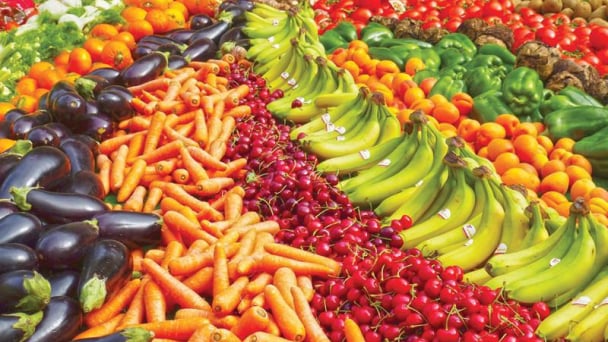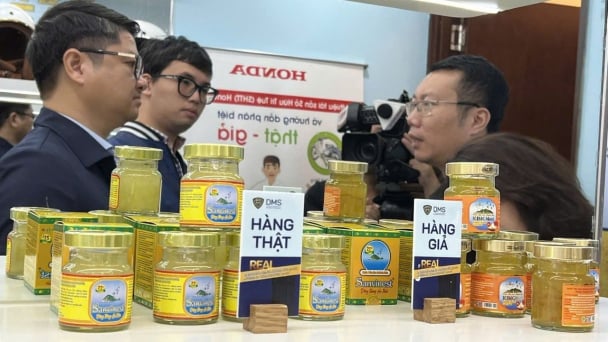May 19, 2025 | 15:28 GMT +7
May 19, 2025 | 15:28 GMT +7
Hotline: 0913.378.918
May 19, 2025 | 15:28 GMT +7
Hotline: 0913.378.918

Deputy Minister Phung Duc Tien spoke at the 2024 All-member Conference organized by the Vietnam Association of Seafood Exporters and Producers (VASEP). Photo: Thanh Son.
During the 2024 Annual General Meeting hosted by the Vietnam Association of Seafood Exporters and Producers (VASEP) in Ho Chi Minh City, Mr. Truong Dinh Hoe, the Secretary General of VASEP, reported that Vietnam's seafood exports amounted to almost USD 3.6 billion in the first five months of the year, reflecting a 6% growth compared to the corresponding period in 2023. The export values of squid, octopus, and other fish (both marine and freshwater) were lower compared to the same period last year, with decreases of 1% and 3% respectively.
Meanwhile, the exports of shrimp and pangasius experienced marginal growth, with rises of 7% and 4% respectively. The growth of crab and scad was the most significant, reaching 84%. Tuna exports also experienced a good increase of 22%, while exports of shelled mollusks expanded by 13%.
The United States demonstrated the highest rate of positive expansion among the top five markets for Vietnamese seafood, with a notable 7% surge over the initial four months of the year. Exports to South Korea experienced a marginal growth of 2%. Nevertheless, shipments to China, Japan, and the EU remained nearly unchanged compared to the corresponding time in the previous year.
Mrs. Nguyen Thi Thu Sac, the Chairwoman of VASEP, asserts that the Vietnamese seafood industry is confronted with a scarcity of raw materials, encompassing both cultivated and wild-caught resources, in addition to geopolitical and global economic challenges. Urbanization has a direct impact on the aquaculture industry, leading to unpredictable changes in land allocation for production in various areas. The lack of consistent land use planning poses a major difficulty for both businesses and fish farmers.
Furthermore, climate change is currently one of the most pressing environmental concerns, exerting a detrimental influence on aquaculture. Prolonged heat waves have a direct impact on the adaptation, growth, and development of aquatic species. This results in reduced resistance to diseases and an increased risk of disease, ultimately leading to less efficient farming practices.

Shrimp processing for export. Photo: Thanh Son.
The origin of seafood obtained from natural habitats is also encountering challenges due to the depletion of resources, resulting in an inadequate catch volume that cannot match the demand. This necessitates the need for additional supply through imports. Nevertheless, both EU market laws and new Vietnamese regulations relating to IUU (Illegal, Unreported, and Unregulated) fishing contribute to the lack of raw material supply.
The 6% increase in seafood exports during the initial five months of the year is a promising outcome for the industry's recovery and expansion.
VASEP predicts that seafood exports in the first half of 2024 will amount to USD 4.4 billion, reflecting a 6% growth compared to the same period in 2023. Additionally, shrimp exports are projected to achieve a value of USD 1.65 billion, pangasius exports are expected to reach USD 910 million, tuna exports are estimated to be worth USD 457 million, squid and octopus exports are anticipated to reach USD 294 million, crab and scad exports are predicted to be valued at USD 119 million, and shelled mollusks are expected to reach roughly USD 74 million in value.
The seafood exports in the latter half of this year will persistently encounter substantial obstacles. The shrimp sector faces challenges such as countervailing duties and anti-dumping duties when exporting to the US market. In Vietnam, the price of raw shrimp continues to be higher compared to other leading shrimp-producing nations such as India, Ecuador, and Thailand.
As an illustration, the price of 70-count whiteleg shrimp per kilogram at Vietnamese farms this year is around 15,000 - 20,000 VND/kg more expensive than shrimp of the same size from Thailand, 20,000 - 30,000 VND/kg pricier than Indian shrimp, and 30,000 - 35,000 VND/kg higher than Ecuadorian shrimp.
The pangasius business is currently dealing with several challenges. These include the issue of low export prices, sluggish consumption in the EU market, volatility in the Chinese market, and worries about ongoing anti-dumping proceedings in the US, which are currently in their 20th administrative review phase. However, the IUU (Illegal, Unreported, and Unregulated) fishing "yellow card" continues to be a challenge for seafood businesses.
The significant benefit of Vietnamese seafood is the increasing market demand for value-added products. Customers visiting major seafood exhibits in the US and EU this year showed particular interest in value-added goods. Vietnam possesses a competitive advantage in the processing of high-value seafood due to its abundance of highly skilled personnel.

A value-added shrimp product from Vietnam. Photo: Thanh Son.
Mr. Ong Hang Van, Deputy General Director of Truong Giang Seafood Joint Stock Company (Dong Thap), states that because to the limited increase in the availability of raw pangasius and the growing demand, prices will inevitably increase. China, the primary market for pangasius in Vietnam, is now beginning to buy more expensive items. Mr. Van forecasts a 5-10% rise in export pricing for pangasius from the present time until the year's end. Thus, pangasius export firms should exercise caution before entering into low-priced export agreements and instead actively watch market conditions in order to get more favorable selling prices.
According to Ms. Nguyen Thi Thu Sac, to reach the goal of exporting USD 10 billion this year, seafood companies must modify and align their operational strategies based on market conditions. Enterprises ought to engage in market diversification for their exports to mitigate reliance on a singular market and enhance exports to untapped markets, to expand and fortify the local market.
In addition, firms must improve the marketing of product visuals to consumers, establish and strengthen the reputation of Vietnamese seafood, stay informed about market trends, accurately evaluate the circumstances, and respond promptly and effectively.
During his speech at the conference, Deputy Minister of Agriculture and Rural Development Phung Duc Tien expressed great admiration for the significant contribution of VASEP to the development of the seafood industry in Vietnam. At present, VASEP member firms contribute to over 80% of the nation's seafood export revenue.
Deputy Minister Phung Duc Tien proposed that VASEP persist in its role as a mediator between businesses and the government, businesses and fishermen, and businesses and global markets to foster the sustainable growth of Vietnamese seafood, thus preserving its status as the third-largest seafood exporter worldwide.
Based on the export results attained in the initial five months of the year and the diligent endeavors of the seafood sector, the leadership of the Ministry of Agriculture and Rural Development anticipates that the total seafood exports for the year might amount to USD 10.5 billion.
Translated by Linh Linh

(VAN) On May 15, Ministry of Agriculture and Environment of Vietnam hosted the 'Connecting Vietnam - Germany agricultural, forestry and fishery trade' seminar in Berlin, Germany.

(VAN) In the face of counterfeit and imitation products, Khanh Hoa Salanganes Nest Company hopes for the prompt completion of the legal framework, strict enforcement against violations, and protection of the bird’s nest brand.

(VAN) Japan's efforts to lower the price of rice through the release of its stockpile may finally be making some progress, albeit at a snail's pace.

(VAN) U.S. tariffs are not only a 'shock', but also an opportunity for Vietnamese businesses to renew their mindset toward comprehensive development.

(VAN) As Bac Giang lychee enters the harvest season, Minister Do Duc Duy expects that the fruit will contribute greatly to agricultural exports due to standardized production and deep processing.

(VAN) Consumers have shown a preference for free-range eggs, but those farming systems are more vulnerable to biosecurity risks like bird flu.
/2025/05/09/5701-1-184335_301.jpg)
(VAN) Vietnam’s eel exports nearly doubled thanks to a mud-free farming model, opening up new prospects while still facing numerous barriers related to international standards.